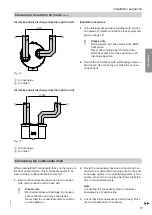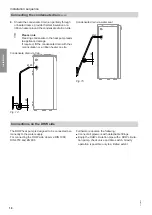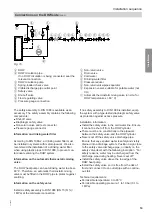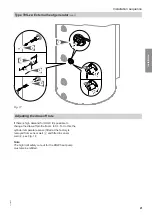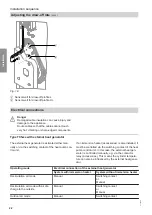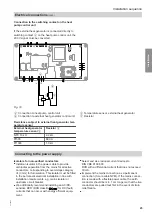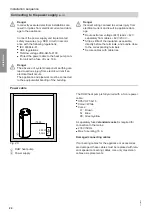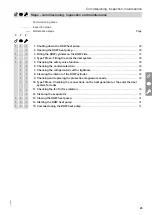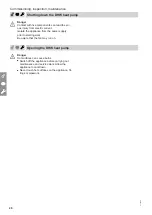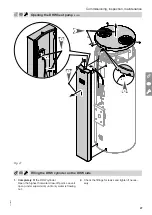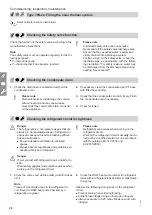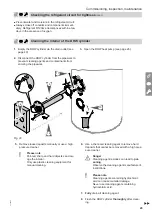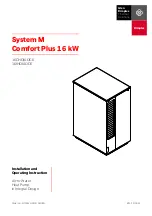
28
Solar collector service instructions
Checking the safety valve function
Check the function of the safety valve according to the
manufacturer's instructions.
Note
The safety valve must be operated regularly for the fol-
lowing purposes:
■
To remove deposits.
■
To check whether it has become jammed.
!
Please note
A jammed safety valve can cause leaks.
Never seal off the safety valve discharge pipe.
Ensure that any expelled water is safely and
visibly drained into a drainage system.
Position a sign on the safety valve or near the
discharge pipe, as appropriate, with the follow-
ing inscription: "For safety reasons, water may
be discharged from the discharge pipe during
heating. Never seal off."
Checking the condensate drain
1.
Check the drain hose is seated correctly on the
condensate drain.
!
Please note
Mechanical stress will damage the conden-
sate connection and may cause leaks.
Never twist the condensate drain connector
on the appliance.
2.
If necessary, clean the condensate pan (PP base
with fitted hose nozzle).
3.
Check that the condensate can drain freely. Flush
the condensate drain if necessary.
4.
Check for leaks.
Checking the refrigerant circuit for tightness
Danger
The refrigerant is a non-poisonous gas that dis-
places air. Unregulated escape of refrigerant in
enclosed spaces can lead to breathing difficul-
ties and suffocation.
■
Ensure adequate ventilation in enclosed
spaces.
■
Always observe regulations and guidelines on
handling this type of refrigerant.
Danger
Direct contact with refrigerant can be harmful to
skin.
Wear safety goggles and protective gloves when
working on the refrigerant circuit.
!
Please note
Refrigerant can escape when working on the
refrigerant circuit.
Work on the refrigerant circuit must
only
be car-
ried out by a certified contractor (in accordance
with Regulations EU 517/2014 and
EU 2015/2067).
1.
Check the valves and visible solder joints for traces
of oil.
Note
Traces of oil indicate a leak in the refrigerant cir-
cuit. Have the DHW heat pump checked by a
refrigeration engineer.
2.
Check the DHW heat pump interior for refrigerant
leaks with a refrigerant leak detector or leak detec-
tion spray.
Observe the following during work on the refrigerant
circuit:
■
Prevent scale when soldering/brazing.
■
Solder/braze fittings using an inert gas (nitrogen).
■
Always evacuate to 0.25 mbar. Break vacuum with
nitrogen.
Commissioning, inspection, maintenance
Type T0S-ze: Filling the solar thermal system
6136003




